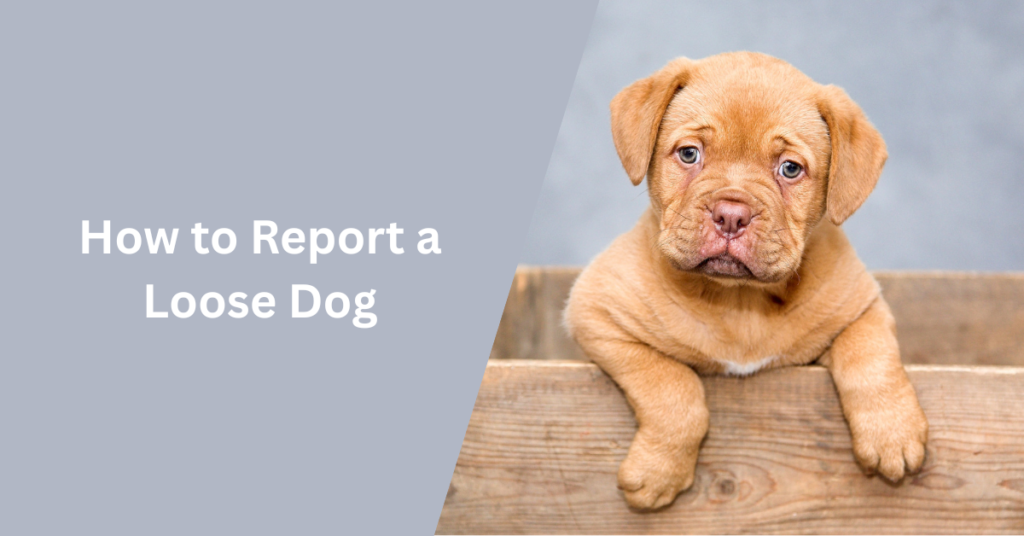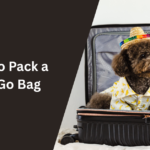Report a loose dog by calling local animal control or the non-emergency police line, providing the dog’s location, description, and behavior. Avoid chasing the dog to prevent accidents. If safe, take a photo or video for identification. Some areas also allow online reports through city websites or dedicated lost pet hotlines.
Check for Signs of Aggression
When approaching a loose dog, watch for these warning signals:
- A direct, intense stare with a tense facial expression
- Ears either laid flat back or standing straight up
- Bared teeth or curled lips
- A slightly upturned nose
- Hair standing up along the neck area
- A stiff, squared-off stance
- Tail positioned high over the back with short, staccato wags
Additionally, look for white showing in the corners of their eyes, since this could indicate an impending aggressive response. Furthermore, if the dog’s weight is centered over their front legs, they might be preparing to lunge forward.
Keep Your Distance
Maintaining appropriate space between you and the loose dog is essential. Subsequently, if a dog barks from a distance, consider it a territorial warning. Rather than approaching directly, stand sideways to appear less threatening. Additionally, avoid these actions that dogs might perceive as hostile:
- Direct eye contact
- Waving arms
- Leaning forward
- Walking straight toward them
- Shouting or making sudden movements
Instead, use calming signals such as yawning or licking your lips while avoiding eye contact. Moreover, if the dog appears friendly, allow them to approach voluntarily rather than moving toward them.
Create a Calm Environment
Establishing a peaceful atmosphere can help prevent the situation from escalating. First, remain still and quiet to avoid triggering the dog’s chase instinct. Furthermore, classical music has been linked to calm and relaxed behavior in dogs.
If the dog shows signs of stress or anxiety, remember these key points:
- Keep your movements slow and deliberate
- Maintain a neutral body posture
- Stay aware of your surroundings
- Look for potential escape routes
- Consider using pheromones or lavender scents if available
Most importantly, dogs can shift from calm to aggressive in seconds. Therefore, constantly monitor their body language and be prepared to slowly move away if needed. Remember that even seemingly friendly dogs might become defensive if they feel cornered or threatened.
Quick Actions to Contain the Dog
Once you’ve ensured your safety, taking swift action to contain the loose dog becomes crucial. Proper containment techniques can significantly increase the chances of a successful recovery while keeping both you and the dog safe.
Use Food or Treats
Carrying treats during neighborhood walks proves invaluable when encountering a loose dog. For optimal results, consider these proven strategies:
- Keep high-value treats handy, as hungry dogs often respond better to food
- Scatter treats on the ground to keep the dog occupied while you secure them
- Use treats to maintain the dog’s focus on you instead of other distractions
- Shake treat bags gently to attract attention without startling the animal
Notably, avoid using raw meat or foods containing bones, as these can cause internal injuries. Alternatively, rotisserie chicken (removed from bones), grilled bratwurst, or canned food work effectively due to their strong aromas.
Set Up a Safe Barrier
First, utilize any available yards or gates to confine the dog within a limited space. This approach prevents the dog from wandering further while waiting for animal control.
Another effective strategy involves using a “magnet dog” – a friendly, well-behaved dog that can help lure the stray closer. Nevertheless, exercise caution with this method and ensure both dogs display calm behavior.
For successful containment:
- Maintain fluid body language and avoid direct staring
- Move slowly while securing the dog to prevent startling them
- Keep a slip lead ready, as stray dogs often lack collars
- Position yourself sideways to appear less threatening
Contact the Right Authorities
After securing the loose dog, promptly reaching out to proper authorities ensures the fastest path to reuniting pets with their owners. Understanding which agency to contact first can make a significant difference in response time and outcome.
Call Animal Control
For non-emergency situations involving loose dogs, contact your local animal control office through their designated hotline. Most animal control departments operate during regular business hours and handle:
- Stray animal pickup
- Dog licensing verification
- Welfare checks
- Basic animal assistance
For immediate assistance outside regular hours, many jurisdictions provide emergency dispatch services. Specifically, when dealing with injured or distressed animals, contact the emergency animal control number provided by your local police department.
When to Contact Police
Contact law enforcement directly under these circumstances:
- Aggressive or vicious dog behavior
- Dogs causing immediate public safety concerns
- Injured animals requiring urgent care
- After-hours animal emergencies
Police departments often collaborate with animal control agencies, especially in situations requiring immediate intervention. Most departments maintain dedicated animal control units that investigate animal welfare concerns and enforce relevant laws.
Reach Local Shelters
Local animal shelters play a vital role in reuniting lost pets with their owners. Upon finding a loose dog:
First, contact nearby shelters to:
- Report the found animal
- Check for matching lost pet reports
- Arrange temporary housing if needed
Many shelters maintain active databases of lost and found pets. Additionally, numerous facilities offer microchip scanning services to identify registered pets quickly. Some organizations, like the H.E.A.R.T program, specifically assist with animal emergencies and evacuations.
Document Everything
Proper documentation plays a crucial role in helping authorities locate and identify loose dogs. Creating detailed records increases the chances of successful pet recovery while ensuring compliance with local regulations.
Take Clear Photos
Capturing quality photographs helps identify distinguishing features of the loose dog. For optimal results:
- Take multiple angles within 10 seconds to avoid stressing the animal
- Focus on natural environments where the dog appears relaxed
- Ensure proper lighting, preferably outdoors or near bright windows
- Photograph at the dog’s eye level for natural facial features
- Include two distinct poses as required by many animal services
Note Location Details
Maintaining precise location information aids search efforts effectively:
- Record exact addresses or cross streets
- Note the direction of travel
- Document specific landmarks or reference points
- Create a detailed map marking all sighting locations
- Include descriptions of the surrounding area
Record Time and Date
Accurate timing details assist in establishing patterns and coordinating search efforts. Essential elements to document comprise:
First, record the initial sighting time within four hours, as mandated by many animal services departments. Likewise, maintain a chronological log of:
- Each interaction with the dog
- Communications with authorities
- Shelter visits and outcomes
- Follow-up actions taken
Conclusion
Helping loose dogs requires a careful balance of compassion and proper procedure. Safety stands as the top priority – both for you and the animal. Through careful observation of dog behavior, strategic containment methods, and prompt reporting to authorities, we significantly increase chances of successful pet recovery.
Documentation plays a vital role throughout the process. Clear photos, precise location details, and accurate timing help create a reliable record that authorities can use effectively. These records often become crucial links in reuniting pets with their families.
Remember that while helping stray dogs feels rewarding, following proper legal channels protects everyone involved. Rather than acting alone, partner with local animal control and shelters who have the expertise and resources to handle these situations properly. Your careful attention to these guidelines ensures the best possible outcome for loose dogs in your community.
I’ve loved dogs all my life and have cared for many different breeds over the years. Here, I share simple tips, stories, and helpful advice for all dog lovers. Whether you’re a new pet parent or a lifelong dog fan, you’ll find something useful and fun on my site.


